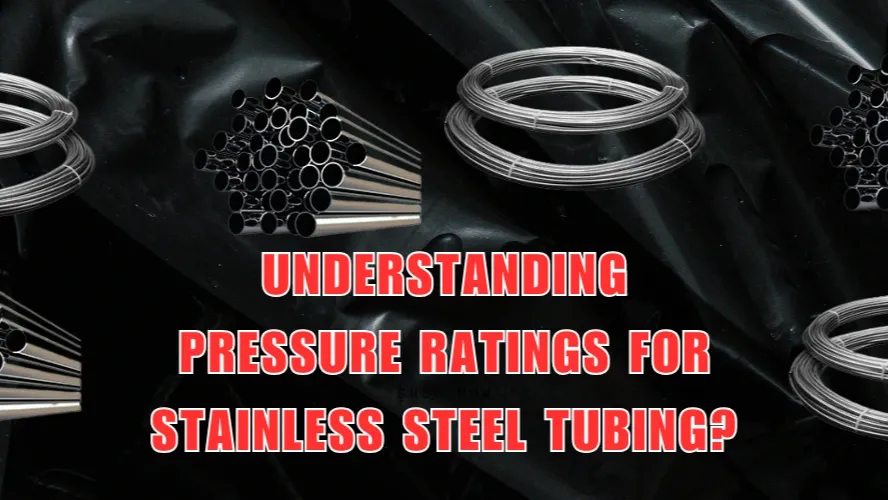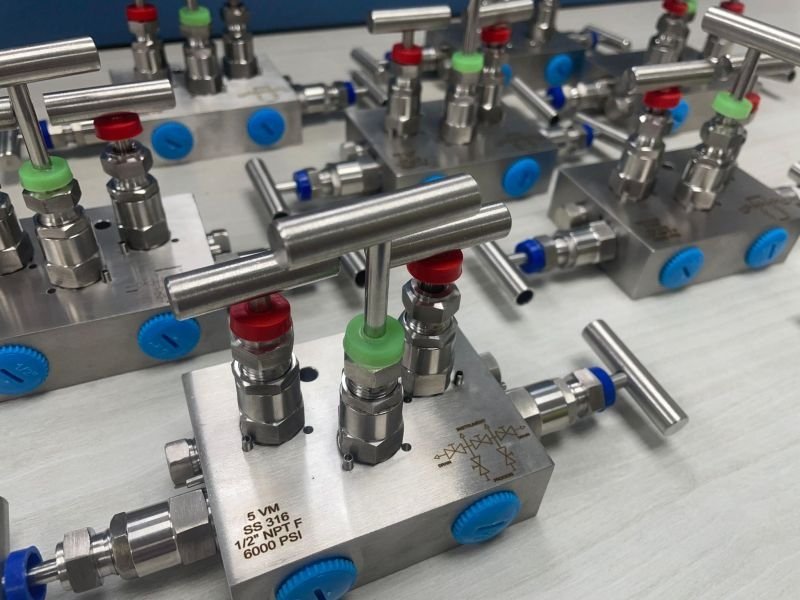
Understanding Pressure Ratings For Stainless Steel Tubing
How can I determine the maximum pressure rating for stainless steel instrumentation tubing in my specific application?
Two common questions from people that work with stainless steel tube fitting are: How much pressure can be applied and what are the tubing’s limits? Understanding the limits of instrumentation tubing can prevent installation errors that could cause costly leaks, environmental spills, and potential worker safety hazards.
When calculating pressure ratings for an assembly that includes tube fitting and tubing, the tubing pressure rating is always used as the pressure
limit on the assembly or system. All tube fittings have a higher working
pressure than any tubing that can be assembled to it, therefore, the
assembly pressure is limited by the tubing size and type being
installed.
The difference between working pressure and burst pressure.
- Working pressure refers to the amount of force exerted on the internal walls of a vessel or tubing while it operates within its designed pressure limits. This parameter is critical for ensuring the tubing performs safely and reliably under normal operating conditions. Exceeding the specified working pressure can lead to catastrophic failures, such as ruptures or leaks, posing serious risks to both personnel and equipment.
- Burst pressure
refers to the maximum pressure any type of instrumentation tubing can
endure before rupturing, representing the ultimate mechanical strength
limit of the material. This value is influenced by critical factors such
as the material's tensile strength and the tube's wall thickness. In
practice, burst pressure is typically much higher than the tubing's
designated working pressure, ensuring a safety margin for normal
operations. Stainless steel instrumentation tubing burst pressure is
commonly rated at 4 times the working pressure limit.
When selecting tubing for oil and gas applications, understanding the factors that affect pressure ratings is crucial to ensuring both safety and system reliability. The performance of tubing under pressure can vary significantly depending on its characteristics and the operating environment. Here are key considerations when choosing the right tubing for your job:
- Corrosion Resistance: Tubing must withstand exposure to corrosive substances such as hydrocarbons, seawater, or acidic gases like H₂S. Selecting materials with high corrosion resistance, such as stainless steel or corrosion-resistant alloys, is essential for long-term durability.
- Temperature Tolerance: High or low temperatures can weaken tubing materials or alter their pressure ratings. Ensure the tubing can perform effectively under the thermal conditions of your operation, whether it involves cryogenic fluids or extreme heat.
- Material Composition: Different materials, such as stainless steel, carbon steel, or nickel alloys, offer varying levels of strength, flexibility, and resistance to wear. The composition must align with the specific demands of the application.
- Wall Thickness: Thicker walls can handle more pressure. However, they also add weight and increase shipping costs due to the heavier material. The balance between wall thickness and the tubing's operational requirements should be carefully evaluated.
- Design Standards: Tubing must comply with industry standards like API, ASME, or ASTM to ensure it meets safety, quality, and performance requirements. These standards regulate compatibility with other system components. Users should always use tubing that conforms to the standards recommended by the manufacturer of their specific fittings.
- Environmental Conditions: Considering external factors such as humidity, temperature fluctuations, and mechanical stressors, ocean spray, and road salts can impact tubing performance and longevity.

